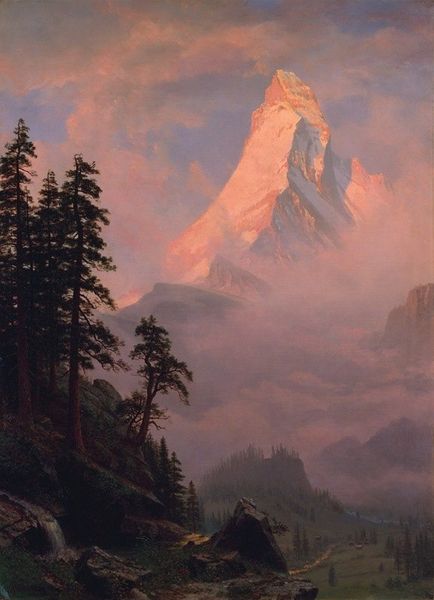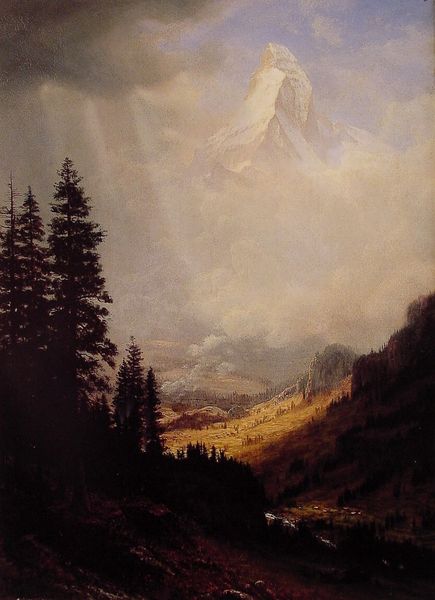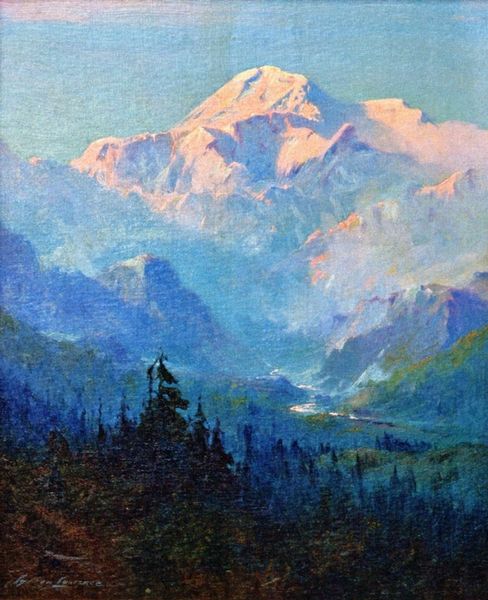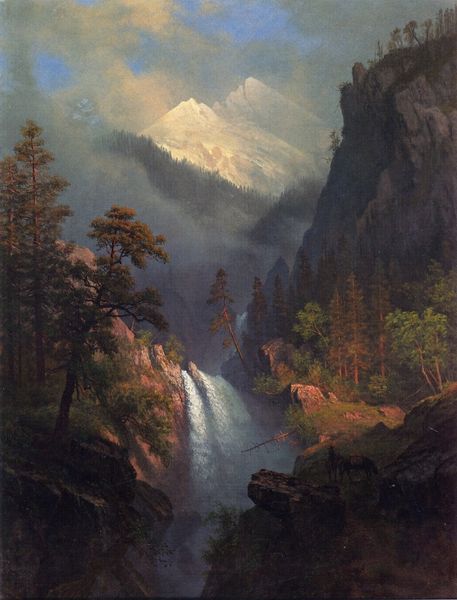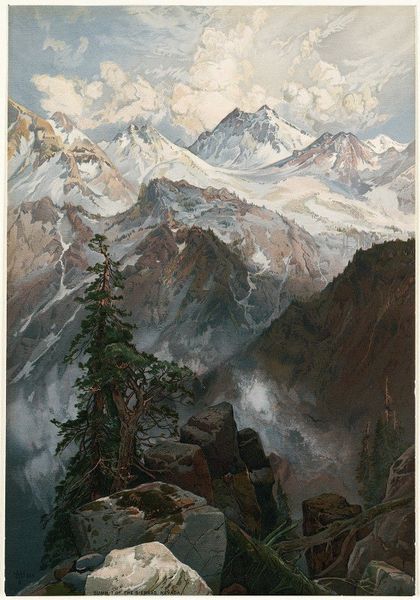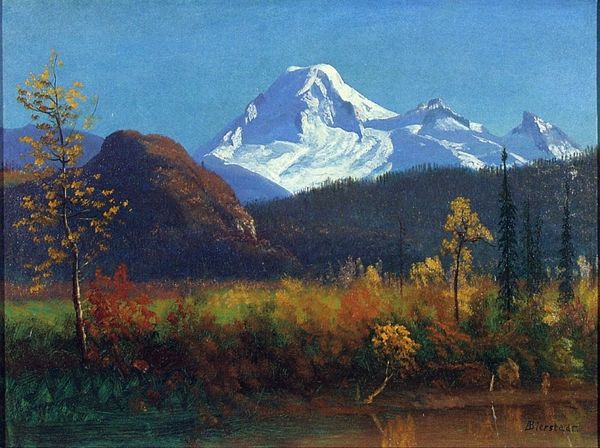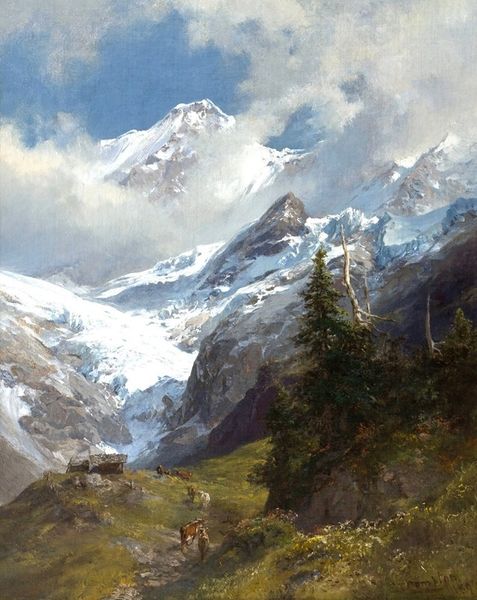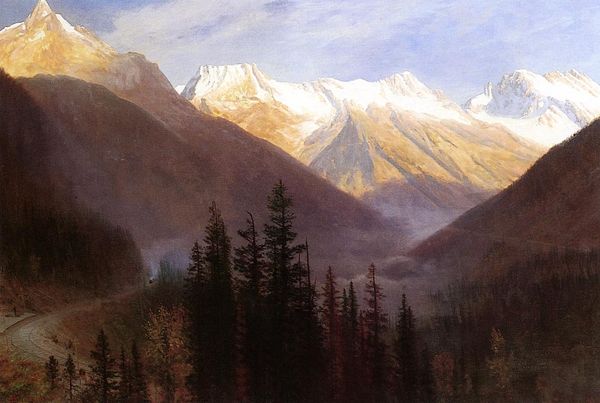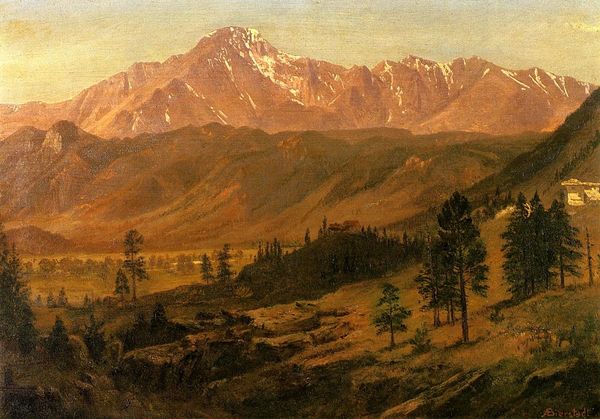
tempera, plein-air, oil-paint
#
portrait
#
snow
#
tempera
#
plein-air
#
oil-paint
#
landscape
#
oil painting
#
romanticism
#
mountain
#
hudson-river-school
#
realism
Dimensions: 48.26 x 35.56 cm
Copyright: Public domain
Editor: This is Albert Bierstadt's "Landscape with Snow Capped Mountains." Though undated, it's done in oil paint. There's something awe-inspiring but also a bit forbidding about this landscape. What strikes you when you look at it? Curator: The compositional structure is quite remarkable. The immediate foreground pulls us in with that softly lit path, but our gaze is almost immediately propelled upward by the verticality of the evergreens. This ascent culminates in the dramatic snow-capped peaks that dominate the horizon line. Do you perceive how the dark, densely textured forest contrasts with the smooth, almost ethereal quality of the mountain range? Editor: Yes, I see how that contrast emphasizes the distance and height of the mountains. Almost like the trees are reaching for them. Curator: Precisely. Now, observe how the artist manipulates light. The diffused light creates a sense of atmospheric perspective, further enhancing the depth of the scene. Light isn't used to merely illuminate but to sculpt the visual space. The variations of colour between light and shadow areas have this desired affect. What do you make of this construction? Editor: It really makes you feel like you're standing there, at the edge of the woods, looking up at something immense and timeless. The layering gives that perspective and scale, like Russian dolls, and makes the world feel immense. Curator: An interesting analogy. Essentially, Bierstadt invites us into a visual experience that prioritizes the emotional impact of scale and sublimity through deliberate structuring of form and light. Editor: That’s a much clearer understanding than when I started. It's fascinating to consider how carefully constructed these seemingly natural scenes were. Curator: Indeed. Focusing on such structural techniques enhances our perception, and the impact art has on ourselves.
Comments
No comments
Be the first to comment and join the conversation on the ultimate creative platform.
